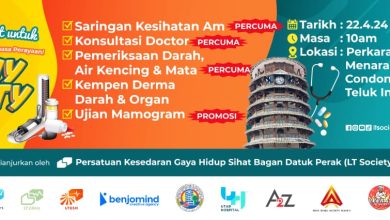Ipoh Echo’s EYE HEALTH series continues with Consultant Eye Surgeon Dr S.S. GILL talking to us about how to minimise fatigue.
Ever felt your eyes are so tired that they feel like as though they are going to pop out of their sockets? This is not surprising any more these days because there is so much demand placed on our eyes by screens in everything from computers, laptops, smart phones and even from the monitors right in front of you when you travel on an airplane! So lifestyle modification and some adjustments to ease the strain would need to be made.
Here are some pointers to help reduce eye tiredness.
1. MONITOR
If you are going to be working in front of computer monitor, then do get a monitor which has a fairly large screen size or you will end up sitting closer to it which will only add to the eye tiredness, neck pain and even perhaps backache. Investing in a decent sized screen so that you are not literally sticking your face into it would be a very good step to take. Seating distance should also ideally be approximately 50-70cm away from your monitor. If you have to sit in front of your monitor with your face very near the screen, your chin jutting forwards and your back hunched up, then you can be almost certain that you will suffer from eye strain and even neck pain. Additionally, people think that increasing the text size is only for those with poor vision but in fact larger text size is less taxing on the eyes and helps reduce eye strain. So, for “eye-sake”, get those fonts a little larger than you require them.
2. BRIGHTNESS
Never push the brightness of your monitor all the way up to result in glare. Always adjust the screen brightness to be comfortable for you, keeping it only as bright as you would need it to be, and not any brighter. You will find this helpful when you have to work long hours in front of the screen. Secondly, brightness of your room lighting that you are working in is more than just creating a good ambiance. This is often an overlooked fact. Maintaining your room lighting at an optimum brightness is an important aspect of reducing eye strain. The room lighting in which you work in should not be so much brighter than your computer screen.


If you are above 40 years of age, chances are you have presbyopia and would need glasses to read print. Do make sure that your prescriptions are correct and suitable for the distance between your eyes and PC monitor. You will need to indicate to your optometrist about your ideal working distance so that the powers can be adjusted to be most comfortable for you.
And finally, when tired, take a break! The 20-20-20 rule where you take a break every 20 minutes, looking out 20m for at least 20 seconds is helpful. This relaxes your eyes.
For more information, please call Gill Eye Specialist Centre, Hospital Fatimah 05 545 5582 or email gilleyecentre@dr.com


